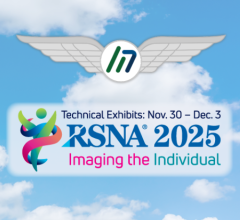
Although it is a small hospital, Waldo County General Hospital in Belfast, Maine, was an early PACS adopter, implementing its first system in 2003.
Waldo County General Hospital (WCGH) is a small, critical access hospital located in Belfast, Maine. The picturesque seaport town has a long history with boat building, fishing and tourism as its economic backbone. WCGH has been serving the area’s healthcare needs since 1901.
As with most critical access hospitals, its remote location and small size — only 25 patient beds — not only has meant limited budgets, but also increased its need to keep pace with technological advancement. It often transfers patients to specialists at another facility and needs to share data outside of its network. The most severe, acute-care cases are transported to tertiary care facilities in Portland and Bangor, Maine. The remote location also has made it difficult to attract physicians, and falling below current technology standards could exacerbate the problem.
With the need to transport images and make imaging studies readily available to referring physicians, WCGH got into the picture archiving and communications system (PACS) game relatively early, implementing its first system in 2003. When it contacted Infinitt North America (then SmartPACS) at that time, no one knew it would be the start of a technology partnership that would support them into the next decade or that its PACS would become the hub of its clinical IT platform.
Today, the hospital and its five rural health centers service more than 1,500 admissions and 118,000 outpatient visits each year. All 47 physicians on staff have login access to the PACS and are using the system to view their patients’ images immediately and radiology reports within hours of the exam.
The Challenge
WCGH implemented its first PACS with a “big bang” approach, implementing a third-party radiology information system (RIS) and a speech recognition system all at the same time. The challenge was to take the radiology department digital and enable clinicians to transfer image and patient data easily when transporting and referring patients. According to David Felton, WCGH’s Director of Information Technology and Information Services, it was easy to do with the Infinitt PACS.
Infinitt helped them integrate the PACS with WCGH’s hospital information system (HIS) and third-party RIS for ordering, film tracking, scheduling, etc. The PACS also was integrated with a Dolbey system so that radiologists could dictate reports while using the PACS viewer. Wide area connections with regional health systems reduced their need to copy images and reports to CD by 75%. Then, towards the end of 2007, Infinitt introduced a major upgrade: The Infinitt G3 PACS is a true Web-based system, and it incorporates RIS functionality on a common database with the PACS.
Before upgrading with Infinitt, WCGH did a comprehensive analysis of PACS offerings from several vendors. They knew they wanted a Web-based system, so that narrowed the field of vendors in consideration. They also felt very good about their partnership with Infinitt and liked the fact that Infinitt was now offering a single database RIS/PACS, which meant working with a single vendor. They had confidence in Infinitt’s R&D capabilities and knew they could work collaboratively with Infinitt developers to extend the system to meet unique local needs.
When the pricing analysis also fell in Infinitt’s favor, WCGH decided to move ahead with the Infinitt upgrade.
The Solution
In Q2 of 2008, the Imaging Department at WCGH upgraded the hospital’s PACS and administrative systems to Infinitt’s single-database RIS/PACS. This seamlessly-integrated image and information management solution included:
• State-of-the-art servers, network switches, workstations, film printers and a film digitizer;
• two new, high-end Konica computed radiography (CR) units;
• migration of seven years of historical patient and order data from the legacy RIS to Infinitt’s integrated RIS/PACS database;
• implementation of HL7 interfaces for enterprise-wide message handling; and
• development and deployment of a feature-rich Mammography Management module that simplified patient letter production and drove productive and accurate recordkeeping.
“Consolidating the RIS and PACS made implementation much easier, and ongoing management and maintenance requirements were reduced greatly,” remarked Felton.
“Infinitt developed the Mammo Tracking Module in the RIS to our specifications and solved an issue with the hospital’s order entry system, which required the RIS to interface an unusual order type that could not be handled by most integration engines.”
With radiology, orthopedics and digital mammography images in a single data store, the Infinitt system had already expanded beyond radiology. So when the Infinitt Cardiology PACS module was introduced in 2009, it made sense to continue adding capabilities onto Infinitt’s single-database platform. By this time, Felton had numerous HL7 integrations under his belt and was confident they could integrate data from multiple departments with the help of Infinitt’s project management team.
Results
The system began as a stand-alone radiology system and evolved into a multi-departmental system. In 2008, Ann Hooper, manager of radiology services said, “With the help of our in-house development team, the system lives and evolves to meet the Imaging Department’s changing needs.”
But as infrastructure and compliance issues surfaced, Infinitt took on a broader role, acting as a consulting arm to WCGH’s IT department. The Infinitt RIS/PACS /Cardiology PACS became a clinical hub that improved IT productivity and enhanced business performance.
Now, David Felton says the system functions well across departments, and he believes it would function well across multiple sites if that were a consideration. He also sees the consolidated platform easing the transition to the Electronic Health Record (EHR). “In retrospect, I can say that Infinitt’s integration strengths have been an important factor in the success of our IT strategy. They have been strongly supportive of our integration goals.”
Case study supplied by Infinitt North America.


 December 09, 2025
December 09, 2025 









